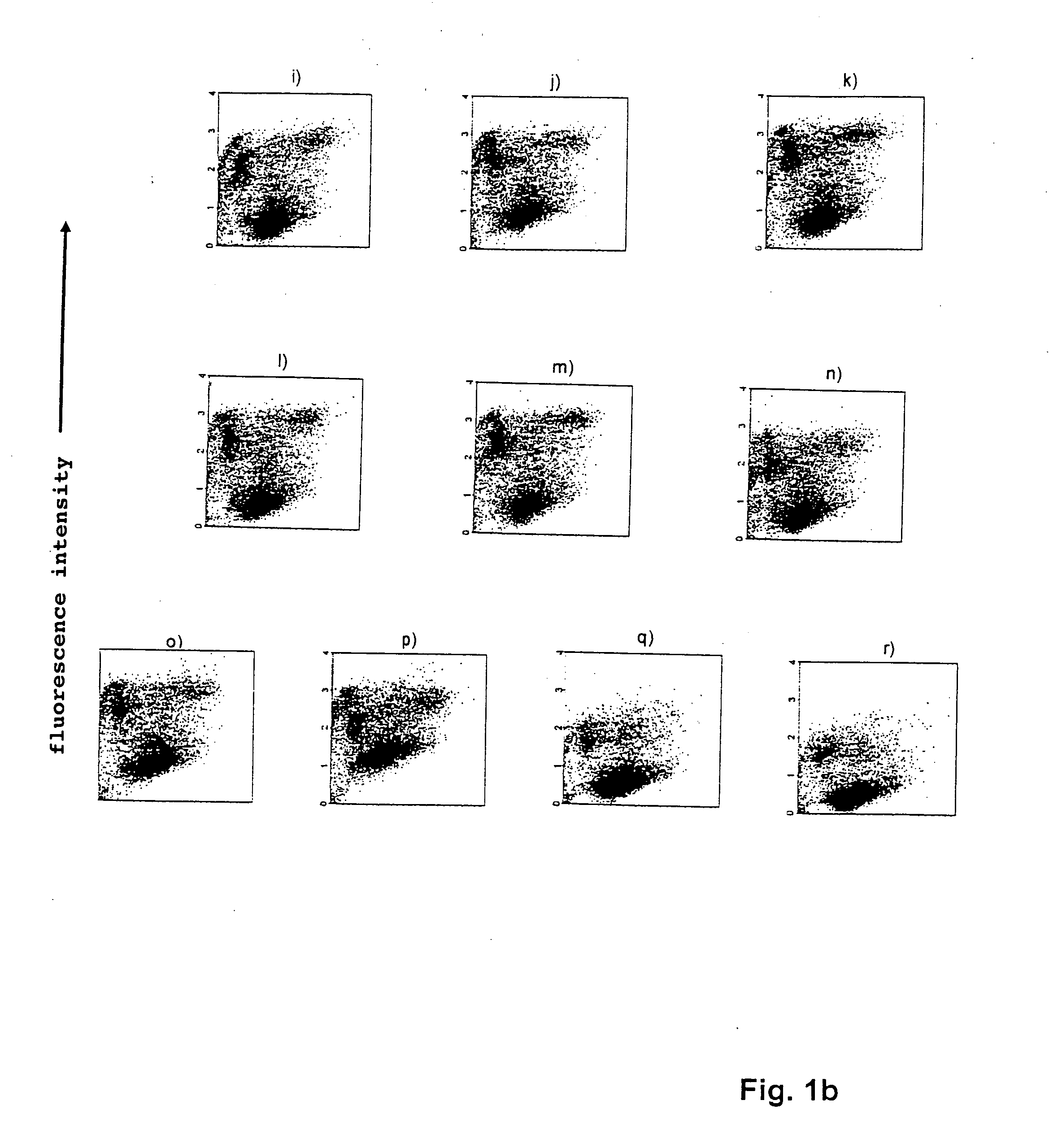Devices coated with substances which mediate the adhesion of biological material
a technology of biological materials and substances, applied in the field of devices coated with substances which mediate the adhesion of biological materials, can solve the problems of life-threatening thrombosis, inflammatory reactions, and extremely elaborate colonization of these implants or devices, and achieves the effects of good biocompatibility, low cost, and no great time consumption
- Summary
- Abstract
- Description
- Claims
- Application Information
AI Technical Summary
Benefits of technology
Problems solved by technology
Method used
Image
Examples
Embodiment Construction
Selecting Aptamers which are Directed Against EPC (Endothelial Progenitor Cells)
[0077] EPCs derived from Lewis rat bone marrow were cultured in commercially available selection and propagation media.
[0078] Oligonucleotides (aptamers) which bind to EPCs were selected from a library (synthetic oligonucleotides, MWG Biotech, Germany) of DNA oligonucleotides which are known to bind to intercellular regulatory (transcription) factors. In this connection, the same method was employed, while using EPCs, as has already been described in DE 100 19 154 and in the publication “Systematic evolution of a DNA aptamer binding to rat brain tumor microvessels: selective targeting of endothelial regulatory protein pigpen” (Blank et al., J. Biol. Chem. 2001; 276(19):16464-8).
[0079] The sequences and designations of the identified oligonucleotides which bind EPC are shown in table 1 below:
FACS No.OligonucleotidesSequencesResultsControl 1Cellsneg.Control 2SEL III 11-1ctg ttg gac att caa aag acneg....
PUM
| Property | Measurement | Unit |
|---|---|---|
| adhesion | aaaaa | aaaaa |
| molecular weight | aaaaa | aaaaa |
| period of time | aaaaa | aaaaa |
Abstract
Description
Claims
Application Information
 Login to view more
Login to view more - R&D Engineer
- R&D Manager
- IP Professional
- Industry Leading Data Capabilities
- Powerful AI technology
- Patent DNA Extraction
Browse by: Latest US Patents, China's latest patents, Technical Efficacy Thesaurus, Application Domain, Technology Topic.
© 2024 PatSnap. All rights reserved.Legal|Privacy policy|Modern Slavery Act Transparency Statement|Sitemap


